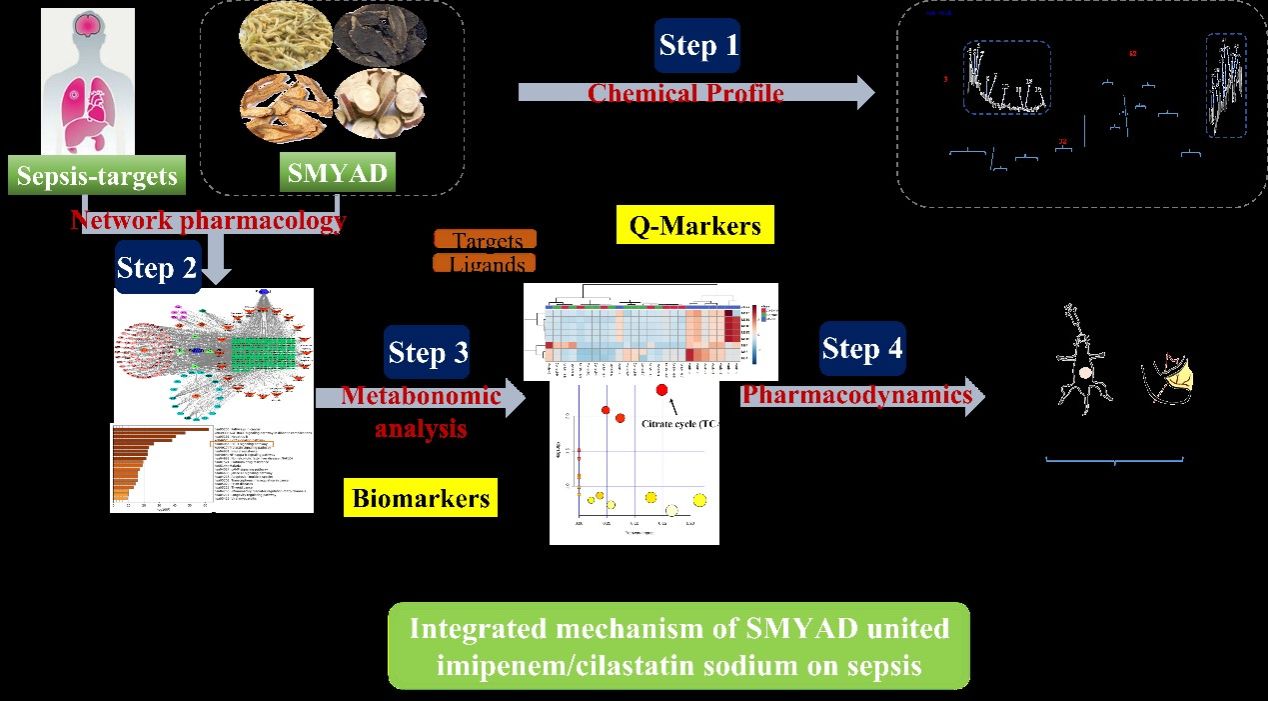Recently, a paper titled " Systematic investigation of the material basis, multiple mechanisms and quality control of Simiao Yong'an Decoction combined with antibiotic in the treatment of sepsis "has been published in the top journal of the Chinese Academy of Sciences (Phytomedicine) by the team of Associate Professor Jiang Jun, School of Pharmacy, Jiangsu University (https://doi.org/10.1016/j.phymed.2023.154910).

Sepsis, characterized by high morbidity and mortality, is defined as a life-threatening organ dysfunction caused by the imbalance of the host's response to infection. At present, few drugs are specialized for sepsis treatment, except for antibiotics and their combined therapy with Traditional Chinese Medicine (TCM). As known to all, TCM takes the advantage of regulating chronic diseases. So, does it also have a unique effect in treating severe diseases such as sepsis?
The ancient classic prescriptions are the essence of TCM. The Catalogue of Ancient Classic Prescriptions (the First Batch) issued by the State Administration of TCM in 2018 included several prescriptions with precise compatibility and unique usage, such as Simiao Yong 'an Decoction (SMYAD). As one of the classic formulas originated from the Qing Dynasty, it consists of Lonicerae Japonicae Flos (90 g), Scrophulariae Radix (90 g), Angelicae Sinensis Radix (60 g), and Glycyrrhizae Radix et Rhizoma (30 g). The prescription possesses the function of reducing heat and toxin, activating circulation and dissipating blood stasis, which is suitable for septic symptoms of "heat, poison and blood stasis" in TCM theory nowadays.
Under the theory guidance of TCM and modern medicine, the team explored the material basis, quality markers (Q-mark), biomarkers (B-mark) and potential mechanisms of SMYAD combined with antibiotic for anti-sepsis based on multi-strategy, such as phytochemistry, serum pharmacochemistry, network pharmacology, molecular docking, metabolomics and pharmacology. SD rats were used for cecal ligation and puncture to simulate sepsis status. After continuous administration, various indicators were detected. Finally, it was proved that SMYAD united antibiotics significantly increased the survival rate of septic rats, alleviated sepsis-induced multiple organ damage, reduced inflammatory reactions, and improved coagulation and microcirculation dysfunction. This study provides a theoretical basis and research foundation for the clinical application and development of SMYAD. The first author of this article is Zhihui Cai, the corresponding author is Associate Professor Jun Jiang, and their only affiliation is School of Pharmacy, Jiangsu University.